

Recent Posts
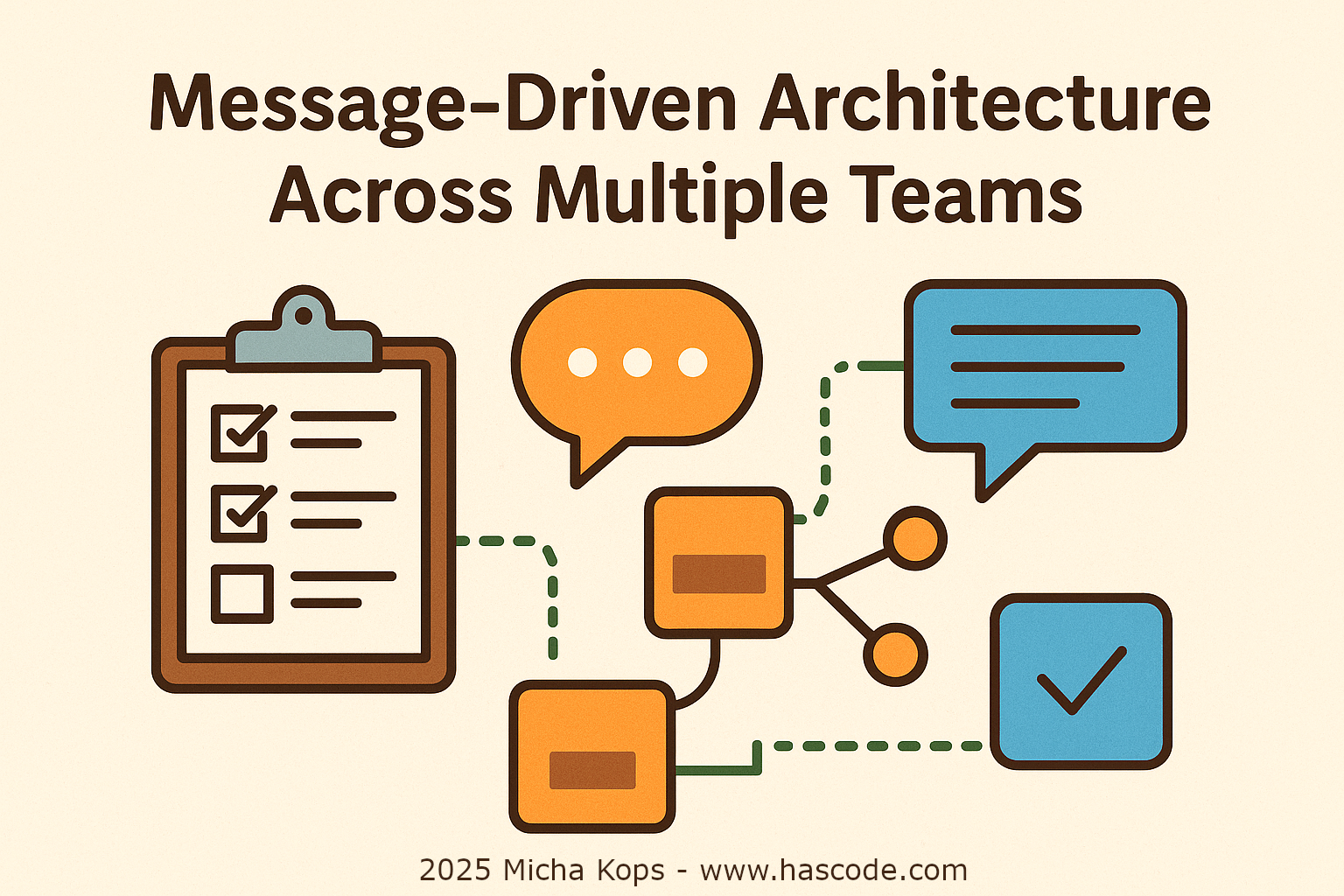
Message-Driven Architecture Across Multiple Teams
Whenever I start planning a new message-driven architecture that spans several software teams, I quickly realize how many moving parts there are. To keep my head clear, I’ve put together a personal checklist of things I always try to cover. It’s not meant to be a formal rulebook, but more of a practical reminder of what usually makes the difference between smooth collaboration and endless headaches. Figure 1. Message Driven Architecture Article Cover Image...
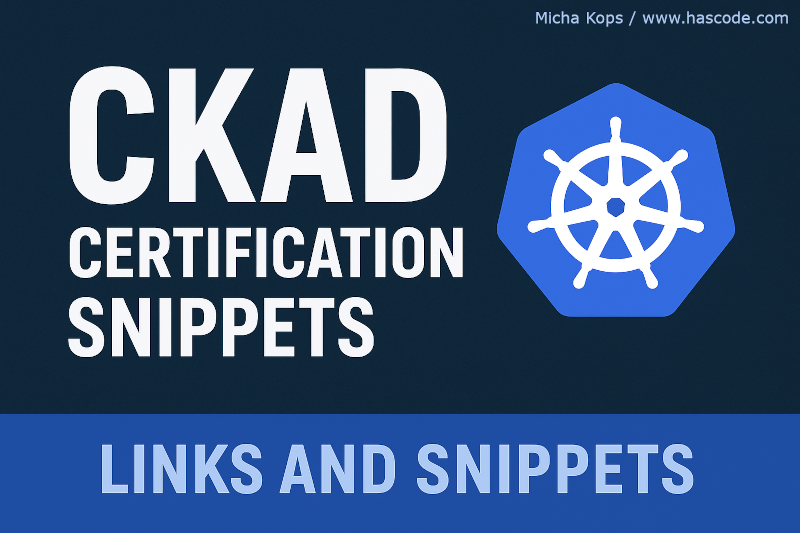
CKAD Certification Snippets
Introduction The Certified Kubernetes Application Developer (CKAD) exam is a hands-on, command-line-heavy challenge that tests your ability to design, build, and deploy applications in Kubernetes - all while racing the clock. I recently took the CKAD and passed with an overall score of around 82%. Not perfect - but let’s be honest, in a terminal-only, time-boxed environment, "running" is the new "succeeding" 😄. This article collects the practical snippets, workflows, and quick references I used during my preparation. ...
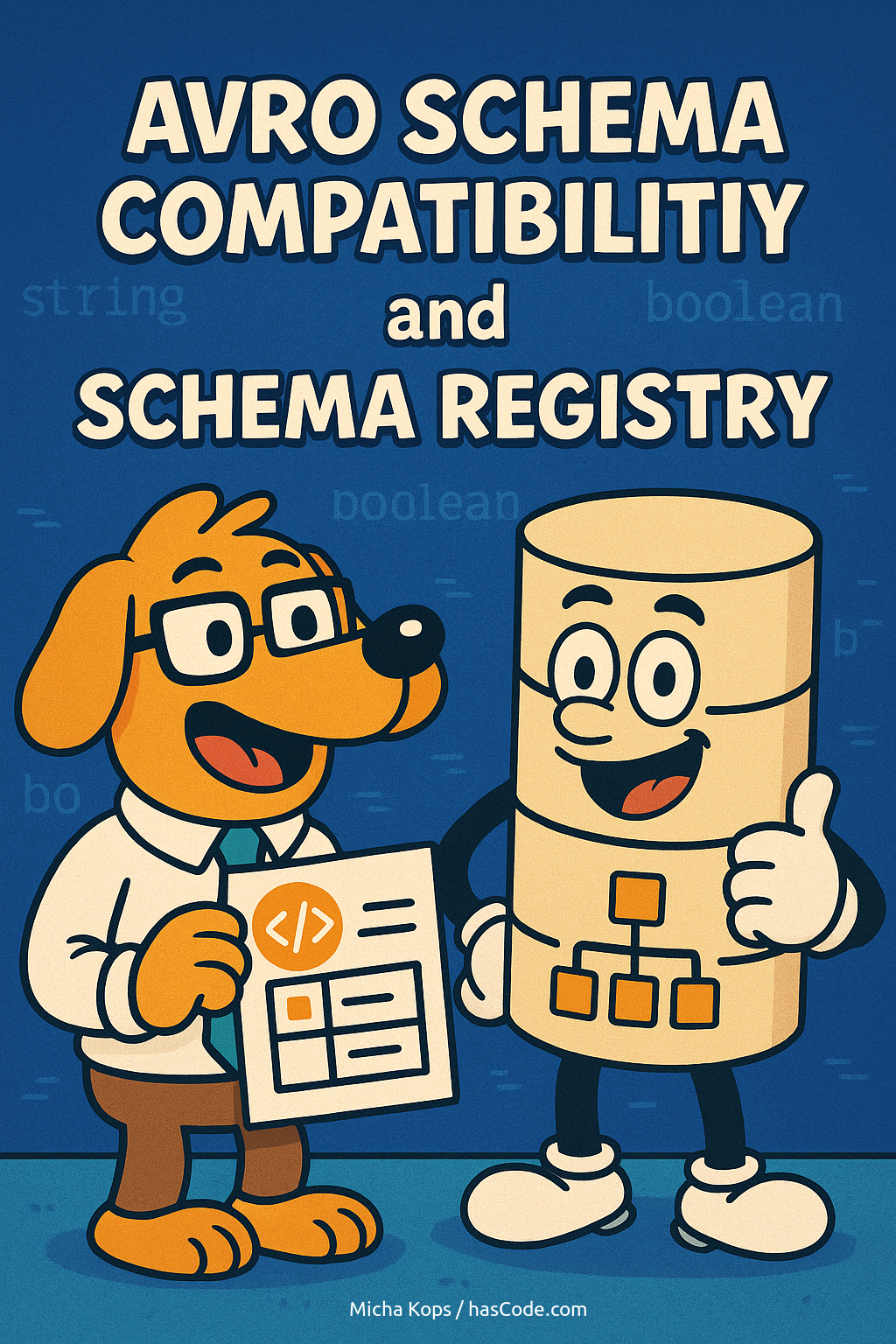
Avro Schema Compatibility and the Confluent Schema Registry
What is Schema Compatibility? Schema compatibility ensures that data serialized by a producer using one schema can be deserialized by a consumer using another. The Confluent Schema Registry provides several compatibility modes to enforce these rules when updating schemas. There are two key directions of compatibility: Backward Compatibility (Upward Compatibility): Old consumers can read data produced with a newer schema. Forward Compatibility (Downward Compatibility): New consumers can read data produced with an older schema. ...

CVE Scanning and Guided Remediation with OSV Scanner
Figure 1. OSV Scanner Security is a critical aspect of software development, and staying ahead of vulnerabilities is essential for us application developers. Google’s OSV Scanner is a powerful tool that helps detect vulnerabilities in open-source dependencies. This article will guide us through setting up and using OSV Scanner to secure our projects, scan for invalid licenses, scan OCI images and finally how to fix findings via guided remediation. ...
Messaging with NATS and Java
Figure 1. NATS Architecture Component Diagram NATS is a high-performance messaging system that offers simplicity, speed, and scalability. It is particularly suited for building distributed systems and microservices. This article demonstrates how to integrate NATS with Java, showcasing the essential steps to set up, connect, and publish/subscribe to messages. Prerequisites Before diving in, we should ensure to have the following installed: Java Development Kit (JDK) 11 or later. Maven or Gradle for dependency management. Docker (optional). ...
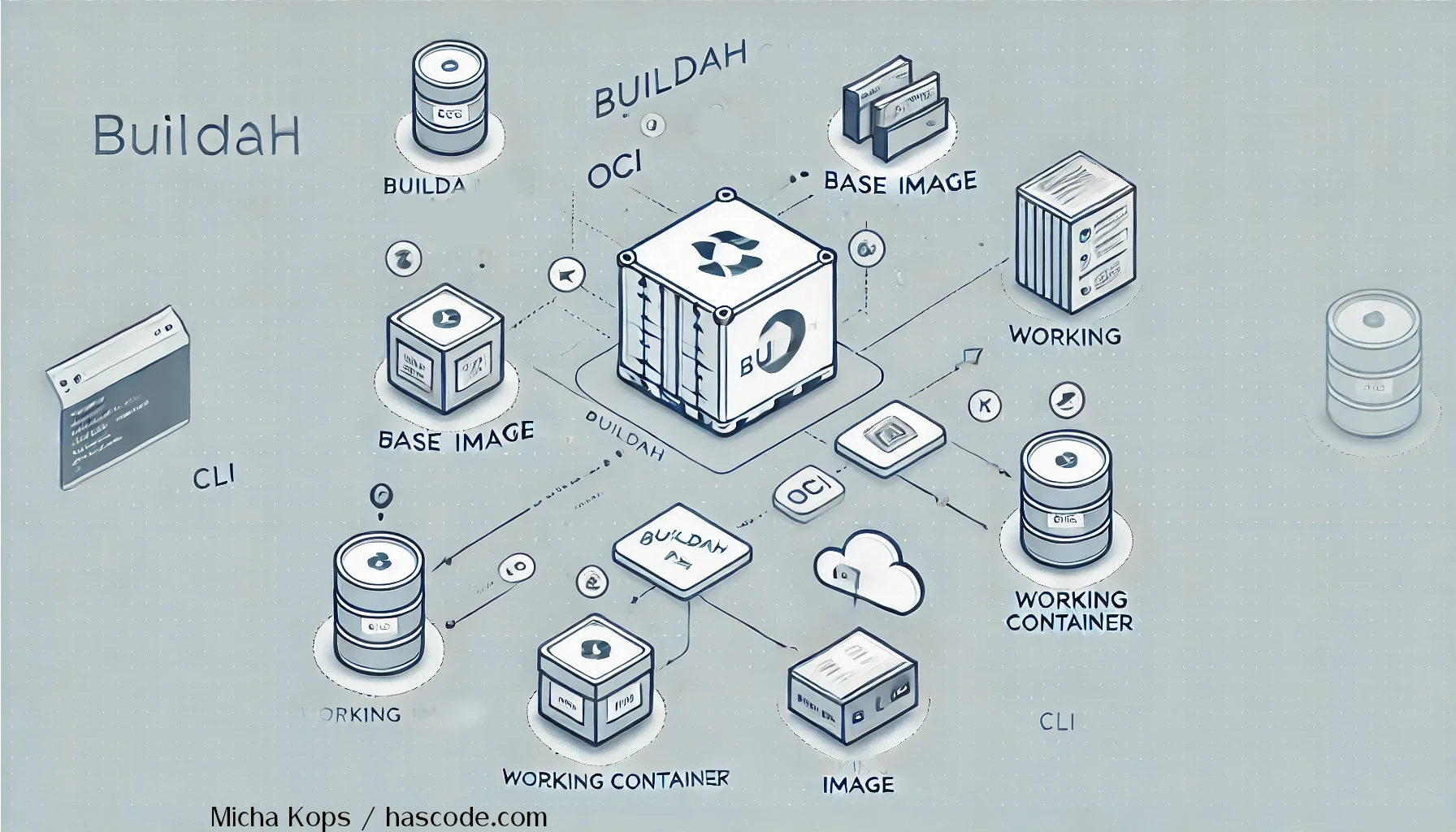
Building OCI Images with Buildah
Figure 1. Cover Image: Building OCI images with Buildah In the world of containers, Buildah stands out as a powerful yet lightweight tool for building OCI (Open Container Initiative)-compliant container images. Unlike traditional tools like Docker, Buildah takes a daemonless approach, making it secure, flexible, and ideal for modern development workflows. Key Features Daemonless Architecture: Buildah doesn’t rely on a background service (like Docker’s daemon). Instead, it directly manipulates images, ensuring a smaller footprint and lower resource usage. Rootless and Secure: You can run Buildah without root privileges, making it safer, especially in multi-user environments or CI/CD pipelines. Dockerfile-Free Flexibility: While Buildah supports Dockerfiles, it also enables image creation without one. Developers can use shell commands or scripts, offering full control over the image-building process. OCI Compliance and Versatility: Buildah creates both OCI and Docker-formatted images, ensuring compatibility with tools like Podman, Docker, and Kubernetes. Lightweight and Scriptable: Its minimal design makes Buildah perfect for automation and scripting, particularly in resource-constrained environments. ...
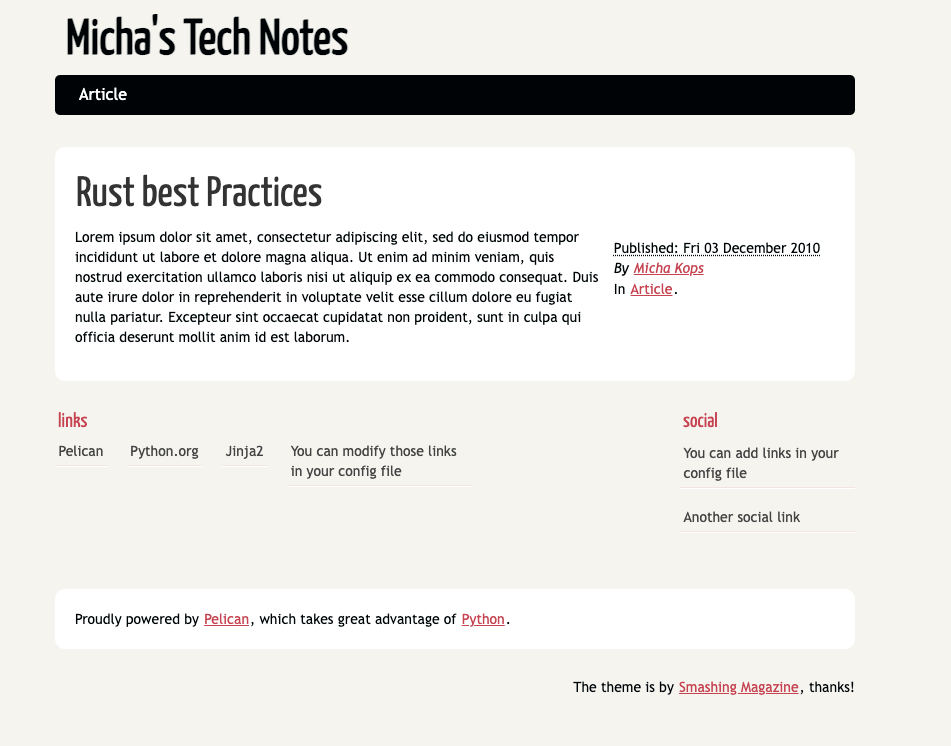
Pelican Blog Quickstart with Docker
Prerequisites We need to have at least Docker installed. Creating the Blog First we’re creating a new directory for our blog and generate the blog structure using William Jackon’s docker-pelican: mkdir my-site cd my-site docker container run -it --rm --entrypoint pelican-quickstart -v ${PWD}:/pelican-site ghcr.io/williamjacksn/pelican Welcome to pelican-quickstart v4.9.1. This script will help you create a new Pelican-based website. Please answer the following questions so this script can generate the files 1 Title: My First Review needed by Pelican. > Where do you want to create your new web site? [.] > What will be the title of this web site? Micha's Tech Notes > Who will be the author of this web site? Micha Kops > What will be the default language of this web site? [C] > Do you want to specify a URL prefix? e.g., https://example.com (Y/n) Y > What is your URL prefix? (see above example; no trailing slash) https > Do you want to enable article pagination? (Y/n) n > What is your time zone? [Europe/Rome] > Do you want to generate a tasks.py/Makefile to automate generation and publishing? (Y/n) > Do you want to upload your website using FTP? (y/N) > Do you want to upload your website using SSH? (y/N) > Do you want to upload your website using Dropbox? (y/N) > Do you want to upload your website using S3? (y/N) > Do you want to upload your website using Rackspace Cloud Files? (y/N) > Do you want to upload your website using GitHub Pages? (y/N) Done. Your new project is available at /pelican-site ...

Handling Secrets with SOPS
Figure 1. Handling Secret with SOPS Installation using homebrew brew install sops manual download download from GitHub https://github.com/getsops/sops/releases Using SOPS Create a sops.yaml sops.yaml creation_rules: # encrypt stuff in .secrets - aws_profile: default kms: arn:aws:kms:eu-central-1:1234567890:key/abcdefg-0123456-abcdefg (1) path_regex: ^./secrets/.*$ (2) 1 We are using AWS KMS for encryption/decryption 2 All files in the directory .secrets will be encrypted Inplace Encrypt sops -e -i .secrets/mysecret.yaml Inplace Decrypt sops -d -i .secrets/mysecret.yaml ...
Shell Script Testing with Bats
We’ve all been there: a small shell script that starts as a quick helper suddenly becomes a critical part of your workflow. Then one day, it breaks - maybe because of a missing argument, a typo, or an unexpected input. Debugging at 2 AM isn’t fun. That’s why adding tests to your shell scripts is a lifesaver. With Bats (Bash Automated Testing System), you can catch these issues early and make your scripts as reliable as any other piece of software. ...

Object Audit with Java and Javers
Figure 1. Object Audit with Java and Javers Just a quick snippet Maven Integration pom.xml <dependency> <groupId>org.javers</groupId> <artifactId>javers-core</artifactId> <version>${javers.version}</version> </dependency> Calculate Changes in Object Graph package io.hascode; import org.javers.core.Changes; import org.javers.core.Javers; import org.javers.core.JaversBuilder; import org.javers.core.diff.Diff; public <T> Changes diff(T snapshot, T latest) { Javers javers = JaversBuilder.javers().build(); Diff diff = javers.compare(snapshot, latest); return diff.getChanges(); } Resources Javers Website